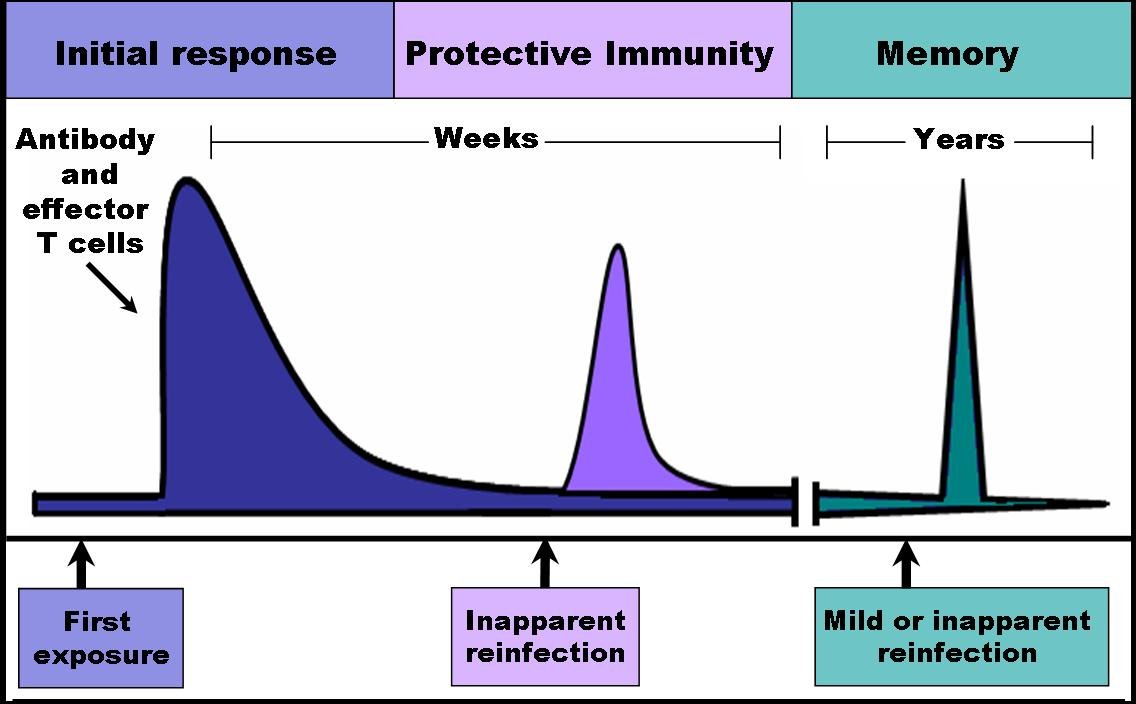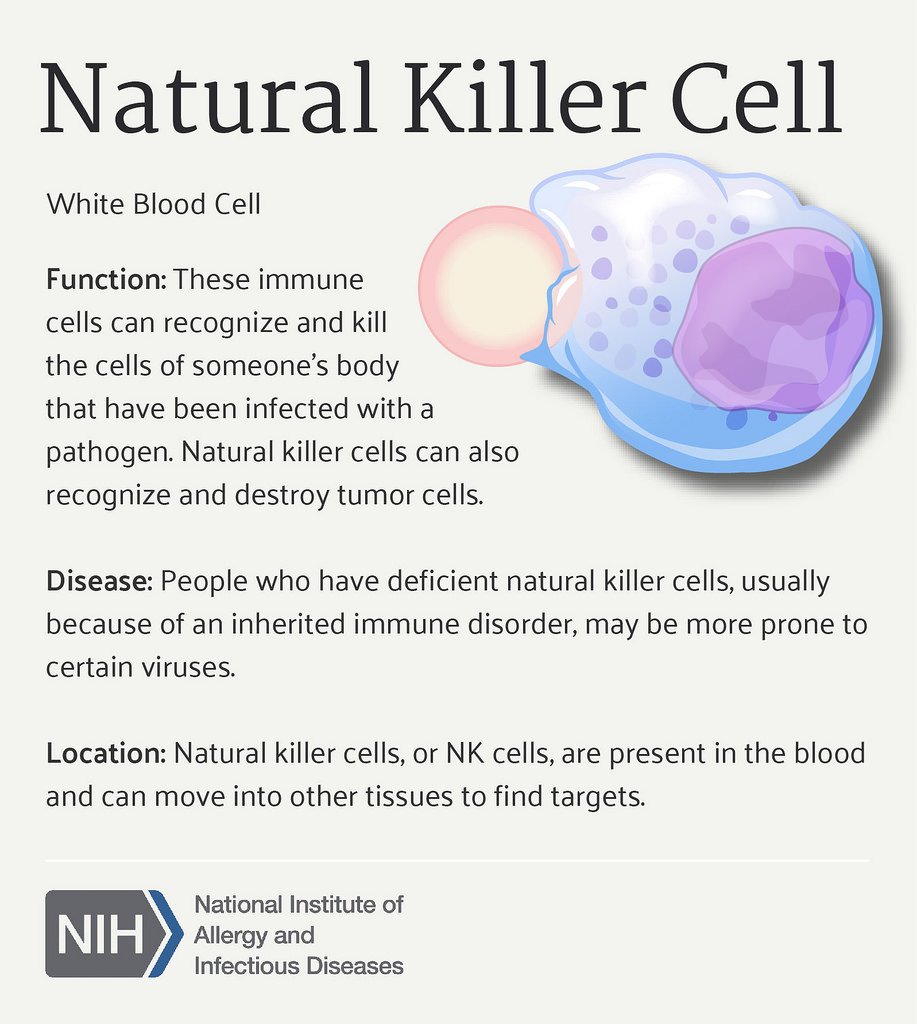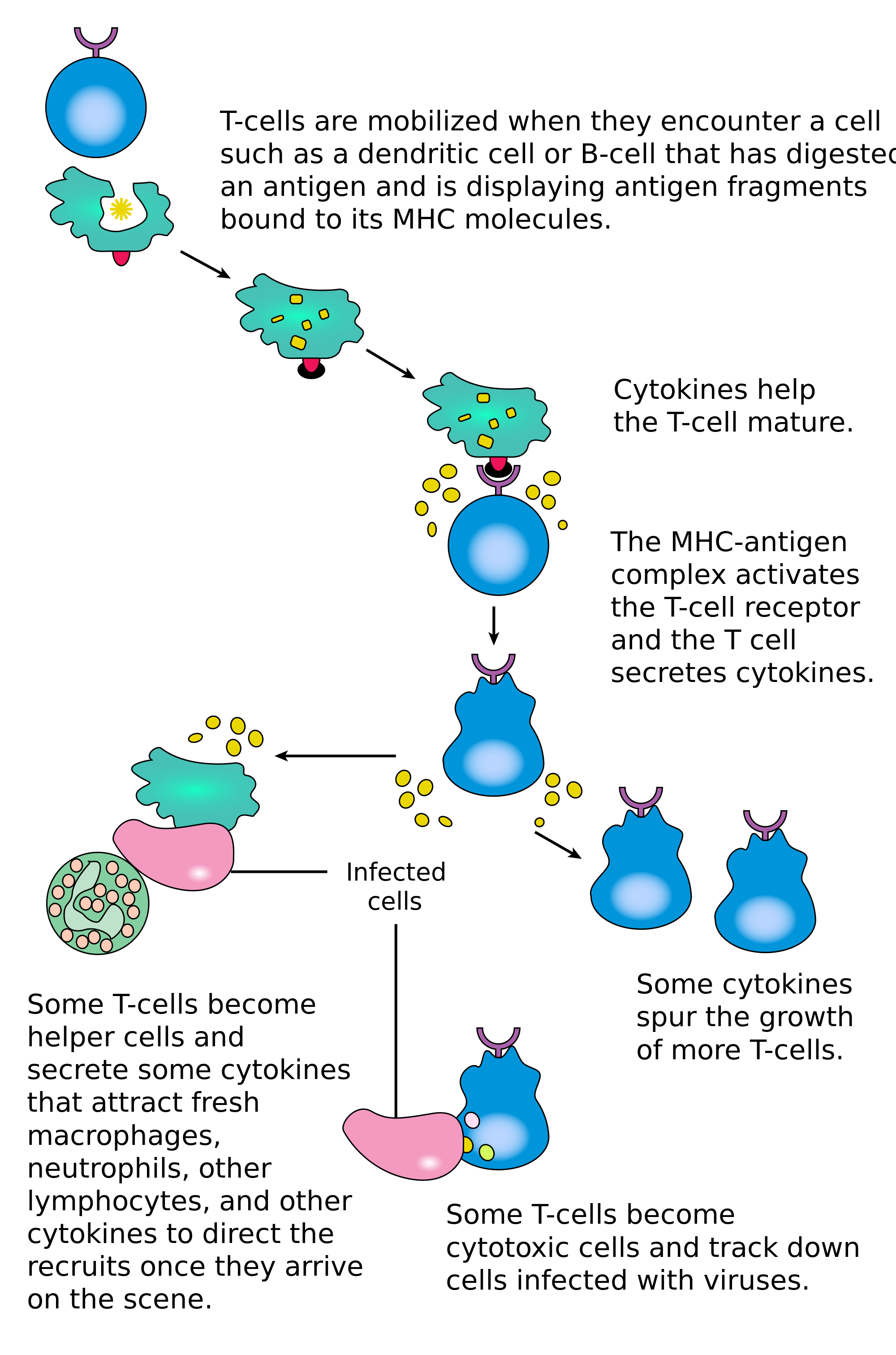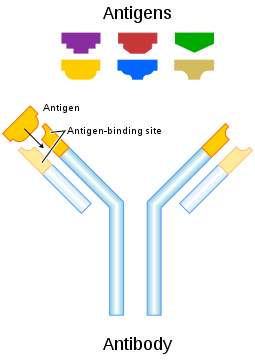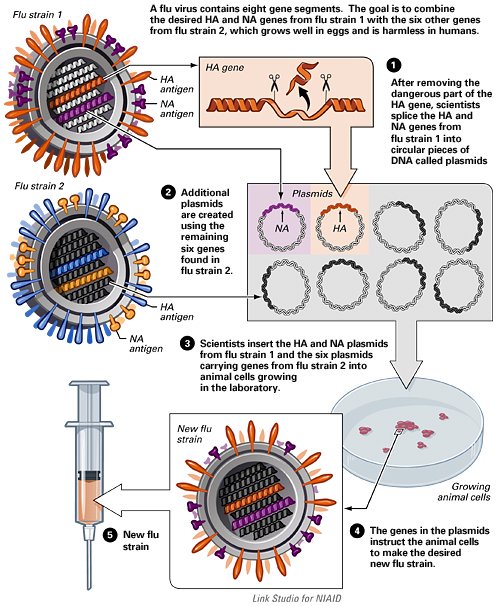Published at 16:52
This is a continuation of a series, for part 1 click here which covers the history of vaccination from inoculation to a brief summary of the eradication of smallpox.
The Immune System
The immune system of humans is very complex to say the least. Point to move forward on, everything here is in reference to humans specifically as some things surrounding immunology changes dependent on what you are referring to (plants, bugs, etc). Overtime our immune system learns, adapts, and so much more and in some cases this adaption is its biggest downside. This post will talk about the two main categories of the immune system: innate and acquired (adaptive). The innate immune system is built up of things such as physical barriers (skin), chemicals in blood (inflammation), etc and the adaptive is comprised of the part that learns and adapts (antibodies). I will focus more time on the acquired immune system as it directly pertains to vaccines but it is important to know how both parts of the immune system works.
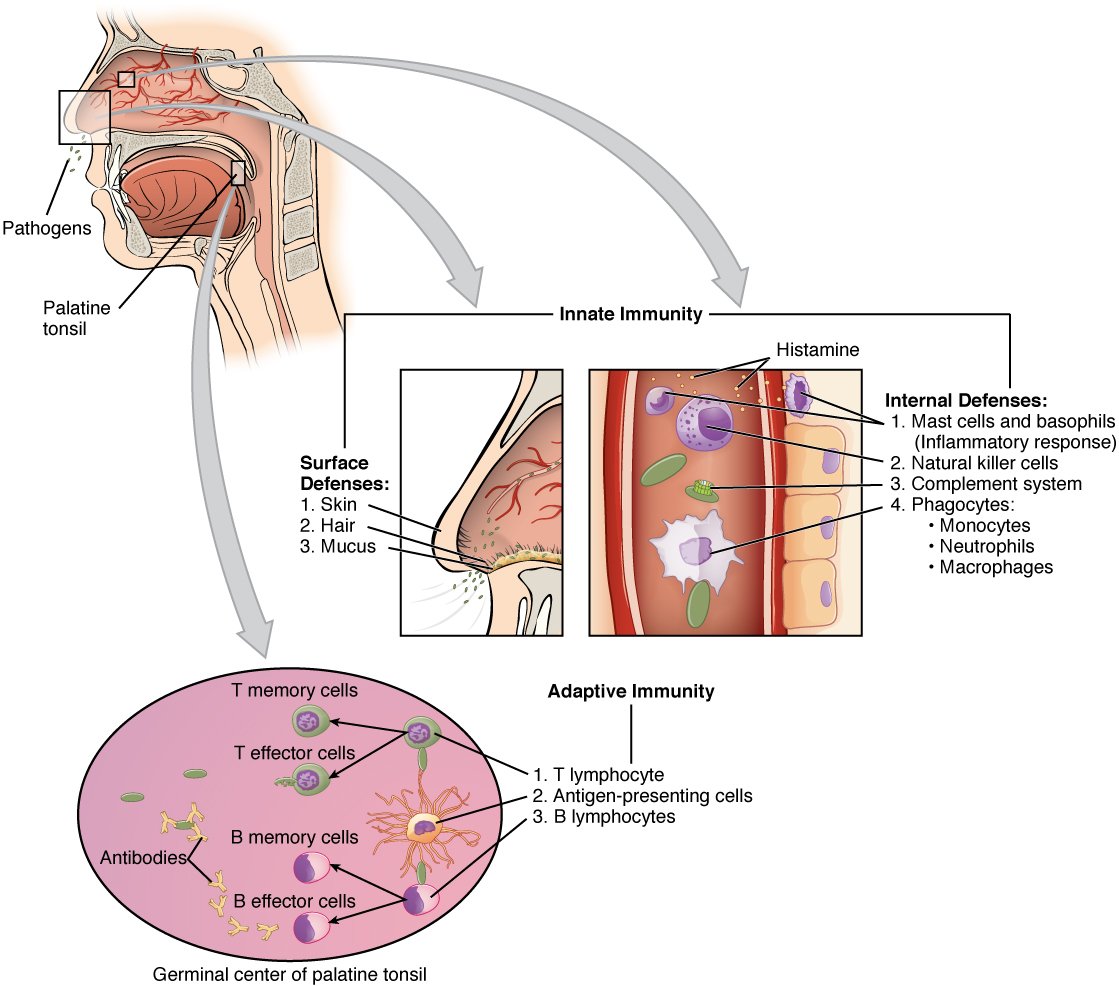
Source [1]
The Innate Immune System
The innate immune system is a conglomerate of every immune response such as coughing, fever, inflammation, mucus production, and anything else your body does to make it inhospitable to the invader.Source [2]
Anatomical barriers
Anatomical barriers include physical barriers, chemical barriers, and biological barriers that prevent infectious agents from infecting the host. physical barriers include tissues such as skin and hair as the skin will prevent bacteria or a virus from entering the body which can help reduce infection. Another physical barrier is hair in places lick your nose which in combination with mucus, in your airway, can help trap anything that you breath in that you do not want in your body. When learning this for the first time my teacher introduced an analogy comparing the immune system to that of a castle: the skin being the walls, the mucus being a moat, and the hairs as the portcullis. A castle with all of this can still be taken via a number of ways and as such it requires some more methods of defense but before we can continue we need to introduce chemical barriers to the immune system. Chemical barriers are things such as histamines which cause inflammation. Histamines are generally released by dying cells and signal that there is damage in the body that needs to be repaired. In a medieval castle a histamine would be a combination of scouts/guards that signal that there is a siege on its way and also works to inform artisans of where there is damage that needs to be repaired. This overview of inflammation is simplistic (and technically incorrect) but for the purposes it is serving here, it works. The site of inflammation tends to attract the next type of barrier, biological, in which it attracts phagocytes (mostly Neutrophils) which then determine what kind of immune response to make. In a castle this would be like calling over someone to make a strategic battle plan and have them determine what guards/soldiers are needed where.
Our Castle with Barriers
So far our castle has walls, a moat, guards, artisans, and more so you might be asking what it is missing? The answer is weapons, armor, a keep, food stores, etc. So I shall continue with the innate immune system to add more items to our castle.
Complement system
The complement system is a biochemical system that acts to help out your immune system through various biochemical means. One way the complement system works is to provide proteins and enzymes that work to destroy plasma membranes of the pathogen, others work to coat the pathogen in proteins that mark it, or the cell it has infected, for destruction. More mechanics involve removing dead/deactivated pathogens and to remove pathogens that have been tagged by antibodies. More the complement system works to help antibodies bind to the antigens. We will add more information to the complement system after we have introduced the acquired immune system.
The foot soldier
Our castle is full of many things but now we are going to add the basic soldier to our walls, the NK (Natural Killer) cell. This cell in essence is used to kill cells that are infected with a virus. Now not exactly like a foot soldier but you can think about it as foot soldiers will kill enemy soldiers that breach the enemy walls, except in humans the walls happen to include plasma membranes of cells. These cells get specifically activated by interferons (a chemical released when there is a viral infection) and prevent the target virus from replicating by killing the cell it is using to replicate with. This can lead to some problems if the NK cell is not turned off as it could start to kill every cell in your body which is what an autoimmune disease is, or some of them at least. These cells limit the spread of an infection as much as possible and are a crucial part to the immune system.
Note before continuation
If any of this was confusing, please do not worry. This is a complex subject, and for the purposes of vaccines, this part isn't worth much. Now, if you do want a much simpler explanation than go check out @suesa and specifically her posts on the innate immune system (here and here) as she has written an explanation that is super easy to understand and very nice. Again I truly recommend her writeup over my convoluted writeup here.
The Acquired Immune System
The adaptive immune system, also known as the acquired immune system or, more rarely, as the specific immune system, is a subsystem of the overall immune system that is composed of highly specialized, systemic cells and processes that eliminate pathogens or prevent their growth.Quote Source [9]
The acquired immune system is the part of the immune system that learns and produces antibodies. This means that this is the part of the immune system that vaccines help with and help do they ever. Think about it, if you are going to go into battle, would you prefer troops that are armed and trained to fight your enemy? Or troops that know nothing about the enemy you are facing? The same thing happens with being sick, if you had a choice of having your immune system already know how to deactivate/kill the specific pathogen making you sick, wouldn't you choose to have your immune system gain that knowledge? Now the rest of this section will explain how the immune system learns.
Antigens and Antibodies
So far we have talked about antibodies but we haven't really said what antibodies are, or how they work. Antibodies are the backbone to the acquired immune system as they are what actually works to stop a pathogen, but before I explain how we first need to explain antigens. An antigen is a marker that exists on the exterior plasma membrane of a cell/pathogen/virus etc. They basically work like a marker to tell other organisms what it is. It would be like men in an army would wear colored cloth that represents whom they fight for, or specifically designed armor. A prime example of antigens that many people know about are the antigens that produce blood groups, blood type A has the A antigen, blood type B has the B antigen, blood type AB has both A and B antigens, and blood type O has no antigens, or at least none that signify blood type. Your body works to detect antigens that are not supposed to be there (instead of ones that are supposed to be there) so for that reason, AB blood can receive from A, B, O, or AB but O can only receive from O. A similar thing works with pathogens, your body is able to detect them because they have an antigen that is not the same as your bodies antigens and that triggers an immune response. Now antibodies are Y shaped proteins that bind to specific antigens.
Since an antibody can bind to multiple antigens of that type there becomes giant globs of whatever the pathogen, or foreign body, that get processed and removed. Basically the antigens will bind multiples of the foreign body together into one giant glob and it prevents any one of them from moving on its own, and as the glob gets bigger, it becomes more likely to accidentally hit another one of that specific foreign body and when it does it catches it and prevents it from moving.How are Antibodies Produced?
My best advice is to check out @aximot's post here as it does the explanation in an amazing light, just it isn't backed by sources so that is what I will do here when I attempt to explain it.
The other source I recommend on this subject is again by @suesa and it is here which is her explanation in the innate and adaptive immune system as it is very simple to understand yet very informative.
My explanation on the topic will be the way I learned it which is the acquired immune system works by first a phagocyte (white blood cell) rolls around the body until it meats a foreign body with a antigen marker that is unrecognized. At this point the phagocyte eats/destroys the body and using the MK2 protein it pushes the antigen marker to its plasma membrane where it can run into an unspecialized lymphocyte which will then mature into a b lymphocyte that specializes to that antigen. Once this b-cell specializes it then produces an antibody that can bind to that antigen (and usually that antigen alone) and it starts multiplying and secreting antibodies until the cell dies. During this process a second type of b-cell is produced, a memory b-cell which has binding sites for that antigen and if that antigen is ever detected it matures into a regular b-cell and secretes antibodies until it too dies. This means that as long as the pathogen exists,antibodies will be produced and as soon as it is gone, the antibodies will stop (eventually). Now, memory b-cells can persist for a long time meaning that after you get sick, if you were to get infected again, your body would be able to produce antibodies much sooner (as it doesn't require running into a phagocyte and then into an unspecialized cell) and because of that you will have a much better chance of getting rid of it. Now if you read my version and compare it to the others, you will notice a big difference because mine talks about b-cells (b-lymphocytes) and theirs talk about t-lymphocytes... The truth is that they both exist, and they are similar, yet different at the same time. The biggest difference is where they are produced (b-cells in bone marrow, t-cells in the thymus gland) but they also have a few other differences such as t-cells are responsible for cell-mediated immunity and b-cells are responsible for antibody production.
Back to the Horrible Castle Analogy
Antibodies are like the actual weapons that your soldiers use, the swords and arrows. The memory B-cell is like the guy that works in the armory arming soldiers and the effector b-cells are like the blacksmiths that produce the weapons. Now over time, weapons and armor evolve such that the armor protects the wearer from a weapon, then a new weapon is made to pierce the armor, and the cycle continues, this happens with immunity as well, the pathogen can mutate and get a new antigen and the immune system can make new antibodies for the new antigen.
Sources: [14] [15] [16] [17] [18]
Vaccines
I will continue more on vaccines in the next post but the important thing to note here is that a vaccine can be made a few ways:
- Take a pathogen and weaken it to prevent it from causing damage (attenuated)
- Take the antigens of the pathogen and use them (inactivated)
Either way the immune system learns about that pathogen and can make antibodies for it but this only works if the person has proper working effector b-cells and memory b-cells.
Final notes
Acknowledgements
First I would like to thank @suesa, I reference to a few pieces of her works here on steemit and the reason is because her posts explain these extremely complex topics in ways that are so much easier to understand. The subject of the immune system is complex to say the least, and her method is so much simpler than mine of coming across.Next I am thanking @aximot as I linked to his post, I find he writes in a way that is both technical, and informative. I have a few suggestions that might make his posts a little better but otherwise I still think they are written to a higher standard than mine.
Apologies
I understand that this post was convoluted and complicated to follow. The problem is that without prior knowledge in this area, introducing some of these topics may be way more confusing, and I think the inability for many in the STEM field to communicate in a way that is easier to understand is probably the biggest downfall for items like vaccination. That being said, there are may in the STEM field that can have their point come across well, I am just not one of them. If you have any questions please ask and I will try to clarify.References
- steemit.com/science/@kryzsec/vaccine-from-inoculation-to-eradication-part-1-of-5
- commons.wikimedia.org/wiki/File:Immune_response.jpg
- commons.wikimedia.org/wiki/File:2211_Cooperation_Between_Innate_and_Immune_Responses.jpg
- en.wikipedia.org/wiki/Innate_immune_system
- www.biology.arizona.edu/immunology/tutorials/immunology/page3.html
- en.wikipedia.org/wiki/Complement_system
- www.flickr.com/photos/niaid/30439199790
- www.ncbi.nlm.nih.gov/books/NBK26846/
- missinglink.ucsf.edu/lm/immunology_module/prologue/objectives/obj02.html
- steemit.com/science/@suesa/the-innate-immune-system-1-2-a-zoo-of-cells
- steemit.com/science/@suesa/the-innate-immune-system-2-2-commuication-is-key
- www.sciencedaily.com/terms/natural_killer_cell.htm
- commons.wikimedia.org/wiki/File:T_cell_activation.svg
- en.wikipedia.org/wiki/Adaptive_immune_system
- commons.wikimedia.org/wiki/File:2216_Antigen_Processing_and_Presentation.jpg
- en.wikipedia.org/wiki/Antigen
- commons.wikimedia.org/wiki/File:Antibody.svg
- steemit.com/science/@aximot/how-does-the-adaptive-immune-system-work
- steemit.com/science/@suesa/innate-vs-adaptive-immune-system-why-there-is-no-story-today
- microbiologyonline.org/about-microbiology/microbes-and-the-human-body/antibody-antigen-complex
- www.ncbi.nlm.nih.gov/pubmedhealth/PMHT0022043/
- www.ncbi.nlm.nih.gov/books/NBK26884/
- www.nelson.com/ABbio20-30/
- primer.crohn.ie/
- commons.wikimedia.org/wiki/File:Flu_Vaccine-_Reverse_Genetics_(5102236843).jpg
Thank you or taking the time to read, if you notice some major errors than please correct me (and cite a proper source please) and I will add the correction, for most things. The information presented here is not 100% accurate, and should not be used if you are studying for an exam. The information is not 100% inaccurate either, its just to simplify things I either left out some information or changed it a little bit. Please comment your reply.

